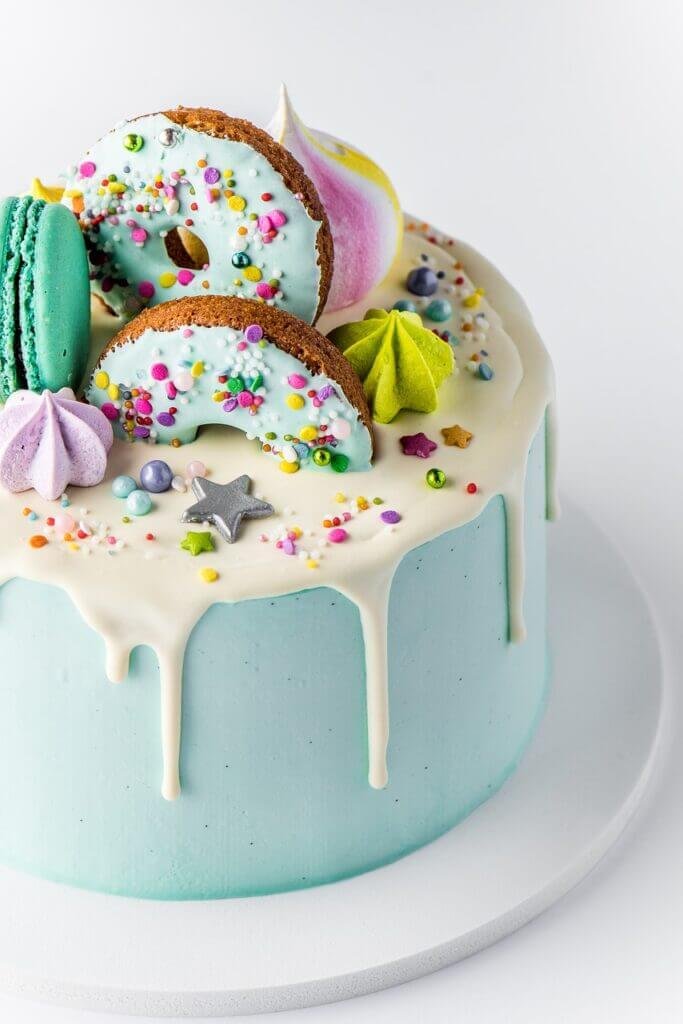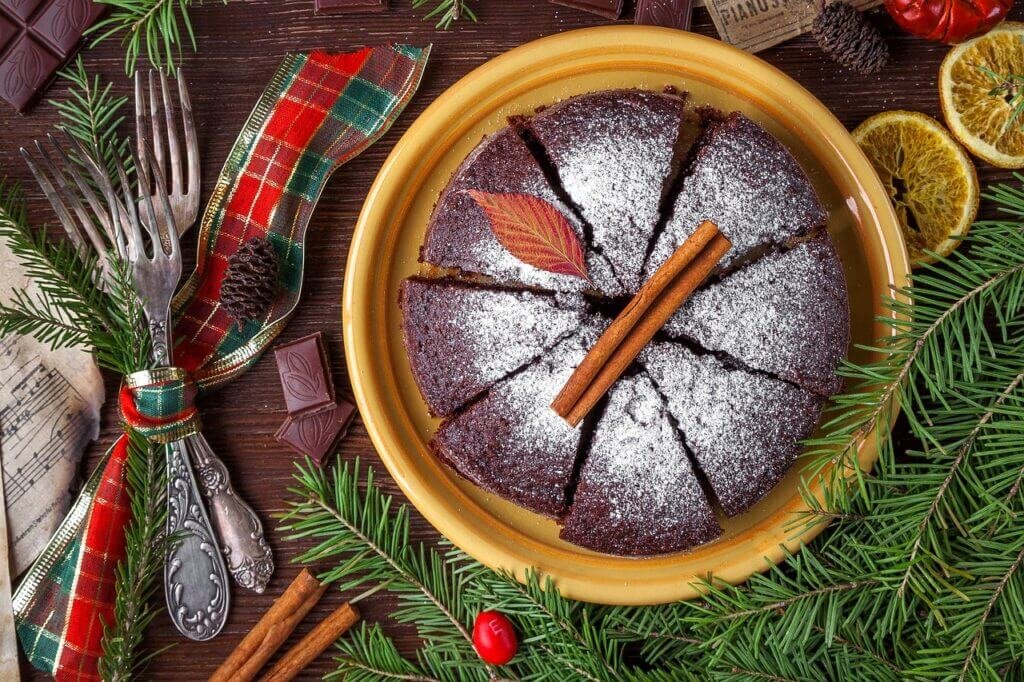If you’ve ever wondered how to achieve that perfect balance of crispy and golden-brown when baking cookies, you’re in the right place. In this article, we’ll explore the secrets to creating cookies with a delightful crunch and a beautiful golden hue. From choosing the right ingredients to mastering the baking time, we’ll guide you through the process step by step, ensuring that your cookies turn out irresistibly delicious every time. So grab your apron and let’s get started on your journey to cookie perfection!

Choosing the Right Ingredients
Flour
Choosing the right type of flour is crucial to achieving crispy and golden-brown cookies. All-purpose flour is a good option as it provides a balance between protein content and gluten development, resulting in cookies that have a tender texture. If you prefer a more delicate and crumbly texture, you can use cake flour or pastry flour. These flours have a lower protein content, which makes the cookies melt in your mouth.
Sugar
The type and quantity of sugar you use can greatly influence the texture and color of your cookies. For crispy and golden-brown cookies, it is recommended to use a combination of granulated sugar and light brown sugar. Granulated sugar gives the cookies a crisp exterior, while light brown sugar adds moisture, flavor, and helps achieve that beautiful golden color. Be sure to measure your sugar accurately to maintain the right balance.
Butter
Butter plays a crucial role in creating those irresistible crispy cookies. It provides flavor and richness, and its fat content helps create a tender yet crispy texture. When choosing butter, opt for unsalted butter as it allows you to control the amount of salt in your cookies. Additionally, make sure the butter is softened to room temperature before creaming it with the sugar. This allows for proper incorporation and helps create a uniform texture.
Eggs
Eggs act as binders in cookie dough, holding all the ingredients together and contributing to the structure and texture of the final product. For achieving crispy and golden-brown cookies, it is best to use large eggs at room temperature. The warmth of the eggs helps with better emulsification and even distribution of ingredients, resulting in a well-textured cookie.
Leavening Agents
Leavening agents are responsible for making your cookies rise and achieve the perfect balance of crispiness. Baking soda and/or baking powder are commonly used leavening agents in cookie recipes. Baking soda helps give the cookies a golden-brown color by aiding in browning reactions, while baking powder adds a bit of lift and contributes to a lighter texture. Be sure to use fresh ingredients to achieve the desired results.
Preparing the Dough
Measuring Ingredients
Accurate measuring of ingredients is vital to ensure consistent results and the desired texture in your cookies. Use measuring cups or a kitchen scale for dry ingredients such as flour and sugar. For the best results, spoon the ingredients into the measuring cup and level it off with a straight edge. When measuring butter, use the markers on the packaging or a scale to ensure precise amounts. Measuring ingredients properly helps maintain the right balance and prevents any potential issues like dense or overly spread cookies.
Mixing Techniques
The mixing technique you use significantly affects the texture of your cookies. Overmixing can lead to excessive gluten development, resulting in tough and chewy cookies. It is best to mix the ingredients until just combined. Begin by creaming the softened butter and sugar together until light and fluffy. Then, add the eggs one at a time, followed by the dry ingredients. Mix until the ingredients are just incorporated to avoid overmixing.
Chilling the Dough
Chilling the dough is a crucial step in achieving crispy and golden-brown cookies. It allows the ingredients to meld together, helps control spread, and enhances the flavor. After mixing the dough, refrigerate it for at least 1-2 hours or overnight. Chilled dough spreads less during baking and retains its shape, resulting in thicker and crisper cookies. It also allows the flavors to develop, giving you a more delicious final product.

Baking Techniques
Preheating the Oven
Preheating the oven properly is essential to ensure even baking and consistent results. It allows the cookies to start baking immediately at the desired temperature, leading to better structure and texture. Preheat your oven to the temperature specified in the recipe, usually around 350-375°F (175-190°C). Avoid placing the cookies in a cold oven as it may cause excessive spreading or uneven browning.
Using the Correct Baking Pan
Choosing the right baking pan is vital for achieving crispy and golden-brown cookies. Aluminum baking sheets with a light-colored surface are the best choice as they promote even browning. Dark-colored or non-stick pans tend to absorb more heat, resulting in cookies that may become overly browned or even burnt. Additionally, using parchment paper or a silicone baking mat on the pan prevents the cookies from sticking and promotes even baking.
Baking Time and Temperature
The baking time and temperature are crucial factors in achieving the desired texture. Follow the recipe’s instructions for the recommended baking time and temperature. Overbaking can result in dry and overly crispy cookies, while underbaking may lead to cookies that are soft and pale. Keep a close eye on the cookies during the last few minutes of baking to ensure they reach the perfect golden-brown color.
Rotating the Pan
To ensure even browning and uniform baking, rotate the baking pan halfway through the cooking time. This helps compensate for any uneven heat distribution within the oven and prevents the cookies from overbrowning on one side. Gently rotate the pan 180 degrees to ensure all the cookies are evenly exposed to the heat, resulting in a beautiful golden-brown color.
Enhancing the Texture and Flavor
Adding Cornstarch
For those who prefer a delicate and tender texture, adding cornstarch to your cookie dough can work wonders. Cornstarch helps inhibit gluten development, resulting in cookies that are softer and more melt-in-your-mouth. Substitute a small portion of the flour with cornstarch, usually around 1-2 tablespoons per cup of flour, to see the desired effect.
Including Oats or Almond Meal
To add extra texture and flavor to your cookies, consider incorporating oats or almond meal in your recipe. Rolled oats add a delightful chewiness and subtle nuttiness to the cookies, while almond meal contributes a moist and tender crumb. You can replace a fraction of the flour called for in the recipe with oats or almond meal, experiment with varying ratios, and find the combination that suits your taste preferences.
Using Dark Brown Sugar
Dark brown sugar contains a higher molasses content than light brown sugar, giving your cookies a richer flavor and a darker golden-brown color. The molasses adds moisture to the dough, resulting in cookies that are soft and chewy on the inside while still maintaining crispness on the outside. Consider using dark brown sugar in your recipes to enhance both texture and flavor.
Incorporating Extra Vanilla Extract
Vanilla extract adds a sweet and aromatic flavor to your cookies, making them even more irresistible. Increase the amount of vanilla extract called for in your recipe to intensify the flavor. The added depth of vanilla enhances the overall taste profile and complements the crispy and golden-brown texture perfectly.
Mixing in Chocolate Chunks
For chocolate lovers, adding chunks of chocolate to your cookie dough can take them to the next level. When the cookies bake, the chocolate melts and creates pockets of gooey goodness within the crispy surface. Opt for high-quality chocolate, such as dark or semi-sweet chocolate, and chop it into chunks or use chocolate chips. The chocolate adds richness and depth to the cookies, making them even more delectable.

Avoiding Common Mistakes
Overmixing the Dough
Overmixing the dough can lead to overly gluten-developed cookies, resulting in a tough and dense texture. To prevent this, ensure you mix the dough until ingredients are just combined. Overmixing can also make the cookies spread excessively during baking, resulting in thin and crispy cookies rather than the desired golden-brown and crispy ones.
Using Unsalted Butter
Using unsalted butter in your cookie dough allows you to control the amount of salt in your recipe. Salt enhances the flavor of the cookies and helps balance the sweetness. By using unsalted butter, you have the flexibility to adjust the salt level to your taste preference, resulting in a more well-rounded flavor. If you only have salted butter, reduce the amount of additional salt called for in the recipe.
Not Using Parchment Paper or Silpat
Using parchment paper or a silicone baking mat on your baking pan is essential to prevent the cookies from sticking and ensure even baking. These non-stick surfaces create a barrier between the dough and the pan, allowing for easy removal and clean-up. It also helps promote even heat distribution, preventing any potential issues like burned bottoms or uneven browning.
Crowding the Baking Pan
Give each cookie enough space to spread and bake properly by avoiding overcrowding on the baking pan. If the cookies are placed too close together, they may touch and merge during baking, resulting in irregular shapes and uneven browning. Follow the recommended spacing provided in your recipe to allow for proper airflow and even heating around each cookie.
Underbaking the Cookies
Underbaking the cookies can result in a pale and doughy texture, rather than the desired crispy and golden-brown finish. Keep a close eye on the cookies during the final minutes of baking, ensuring they have a slightly golden color around the edges and have set in the center. Remember that the cookies will continue to firm up as they cool, so it’s better to slightly overbake than to underbake.
Alternative Cooking Methods
Microwave Method
If you’re looking for a quick and hassle-free way to make cookies, the microwave method can be a game-changer. While it may not provide the exact crispy and golden-brown texture as traditional oven-baked cookies, it offers a convenient alternative. Simply shape the dough into individual cookies, place them on a microwave-safe plate, and microwave for a brief time. Experiment with cooking times, but be cautious not to overcook as microwaves vary in power.
Air Fryer Method
Another alternative cooking method that has gained popularity is using an air fryer. Air fryers utilize hot air circulation to cook food, resulting in crispy and golden outcomes. To make cookies in an air fryer, preheat it, place the shaped cookie dough in the basket, and cook for the recommended time at the specified temperature. It is essential to keep a close eye on the cookies to avoid overbrowning or burning, as air fryers can cook faster than traditional ovens.
Storage and Preservation
Cooling Completely
After the cookies have finished baking, allow them to cool completely on a wire rack. This process is crucial as it helps the cookies firm up and maintain their desired crispiness. Transferring them to a rack also prevents them from becoming moist due to residual heat and condensation. Evenly cooled cookies are easier to handle and retain their texture and flavor for longer.
Storing in Airtight Containers
To preserve the freshness and crispiness of your cookies, store them in airtight containers. Use containers that have a secure seal to prevent air and moisture from entering. Glass or plastic containers with tight-fitting lids work well. It is advisable to separate different cookie varieties with parchment or wax paper to prevent any flavors or textures from mingling.
Freezing the Cookies
If you want to enjoy the cookies at a later time or save some for future occasions, freezing them is a great option. Once the cookies have cooled completely, place them in freezer-friendly containers or resealable bags. It is recommended to separate layers of cookies with parchment or wax paper to prevent them from sticking together. When ready to enjoy, thaw the cookies at room temperature or reheat them in a preheated oven to regain their crispy texture.
Adding Decorations and Toppings
Icing or Frosting
Add a touch of creativity and sweetness to your cookies by using icing or frosting. You can drizzle a simple glaze made from powdered sugar and milk over the cookies for a glossy finish. Alternatively, you can decorate the cookies with buttercream or royal icing, allowing you to create intricate designs or patterns. Icing or frosting can not only enhance the visual appeal but also add an extra layer of flavor to your crispy cookies.
Sprinkles or Colored Sugar
For a pop of color and added crunch, consider using sprinkles or colored sugar on your cookies. Sprinkle them over the cookies just before baking, ensuring they adhere to the dough. As the cookies bake, the sprinkles or colored sugar will melt slightly and create a delightful visual effect. This simple decoration adds a festive touch to any occasion and brings additional texture to your crispy cookies.
Glaze
A thin glaze can beautifully coat your cookies, giving them a glossy finish and a burst of flavor. You can make a simple glaze using powdered sugar, a liquid (such as milk or citrus juice), and, if desired, a splash of vanilla extract. Dip the cookies into the glaze or drizzle it over the top for an elegant touch. The glaze helps seal in moisture, keeping your cookies fresher for longer while adding a delicious finishing touch.
Serving and Presentation
Pairing with Beverages
Crispy and golden-brown cookies are delightful on their own, but they pair exceptionally well with various beverages. Enjoy them with a warm cup of coffee or tea, where the contrasting textures and flavors complement each other perfectly. For a twist, consider serving them alongside a glass of milk, hot chocolate, or even a scoop of your favorite ice cream. The combinations are endless, and experimenting with different pairings can elevate your cookie experience.
Arranging on a Platter
When serving your cookies, presentation plays a crucial role. Arrange them on a platter or plate, taking care to showcase their golden-brown color and various shapes. For a visually appealing display, consider arranging the cookies in a circular pattern or creating a small tower with different sizes. Sprinkle some powdered sugar over the cookies or garnish with fresh fruits for an added touch of elegance.
Experimenting with Recipes
Variations with Flavors
Crispy and golden-brown cookies provide an excellent canvas for experimenting with different flavors. Consider adding ingredients such as spices (cinnamon, nutmeg, or ginger) or extracts (almond, lemon, or peppermint) to your dough. You can also incorporate citrus zest, chopped nuts, or dried fruits to create unique flavor profiles. With each variation, you can explore a new twist and discover your own personal favorites.
Creating Different Shapes
While classic round cookies are always a hit, experimenting with various shapes can add a fun element to your cookie-making experience. Use cookie cutters to shape the dough into different forms such as hearts, stars, animals, or even letters. As you bake them, pay attention to the cooking time, as different shapes may require adjustments to ensure even baking and achieve the desired crispy texture.
Substituting Ingredients
Feel free to explore ingredient substitutions to cater to specific dietary preferences or requirements. For example, you can use alternative flours such as almond flour or gluten-free flour blends for those who follow a gluten-free diet. You can also replace butter with coconut oil or margarine for a dairy-free option. Be mindful of the potential impact on texture and taste when making substitutions and adjust the recipe accordingly.
By following these tips and techniques, you can create crispy and golden-brown cookies that will have your friends and family raving. Remember to choose the right ingredients, master the dough preparation, perfect your baking techniques, and have fun experimenting with flavors and shapes. With a little bit of practice and creativity, you’ll be able to enjoy the crunchy, golden goodness of homemade cookies whenever you desire. Happy baking!


